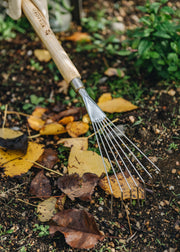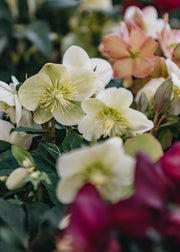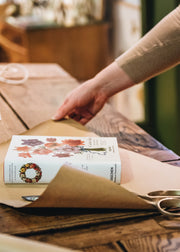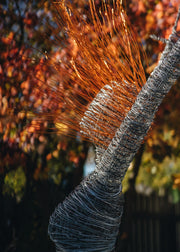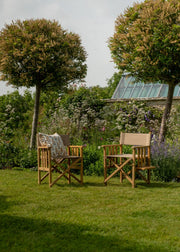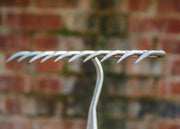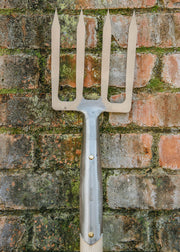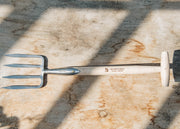The Magic of Composting
A productive compost is one of the most satisfying things to have in the garden, whatever the size. Kitchen and garden waste go in one end and as if by magic, a friable, nutritional soil conditioner in the form of compost comes out the other. Happily, it is not difficult!

Find a site in a sunny corner of the garden, ideally with space on either side to facilitate turning (see later). The bin can range from a ready-to-assemble slatted wooden compost, a purpose-made plastic bottomless bin (ideal for smaller gardens but needs more aerating) or your own home-made bin, often comprising wooden pallets and chicken wire. (The chicken wire prevents the vegetable matter falling between the slats of the pallet and deters rodents.) A metre square is an ideal size for a compost bin. Position the bin directly onto roughly turned soil to encourage access to worms and other helpful digesters.
Before you put anything in the bin, ensure that you have a 50/50 mixture of the nitrogen/carbon waste material (too many grass clippings for example will result in a slushy, over nitrogen rich mixture). It is better if the organic material is chopped or broken up into a manageable size (nothing larger than your hand); too large and the decomposition is slowed down. In time the combination of bacteria, fungi, nematodes, beetles and worms will locate your compost and weave their magic. They will need as much air as possible and some water, usually from the organic material you are adding, but preferably have a lid to retain the heat and protect from rain.



Aeration of the compost is important for the oxygen hungry microbes. Compost can take from 6 months to a year, but this depends on how much air is incorporated. The best way to guarantee plenty of air is by regularly ‘turning’ the heap. This means either upending the bin and putting the composting material back into the bin, or ideally, in a larger garden, tipping the entire compost heap into another area beside the bin or heap and starting a new compost heap on the original site. Check that you are not disturbing welcome garden visitors such as hedgehogs.
After some months you will know your compost is working because it will feel warm as the decomposition takes place and there will be plenty of red worms. Depending on the amount of aeration, the process should take six months to a year to produce usable compost. The end product should feel good in your hands and have no smell, it can be used to enrich the soil of your borders and veg patch or top dress containers, and it means there is very little organic waste from your household – the ultimate in recycling.



